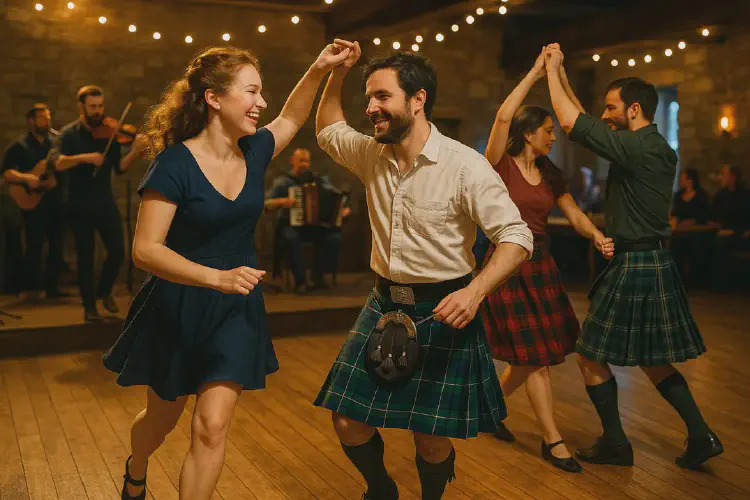Traditional Scottish music and ceilidhs
Music and dance are at the heart of Scottish culture. Traditional tunes and lively ceilidhs (pronounced *kay-lees*) connect communities, celebrate heritage, and welcome visitors into the spirit of Scotland.
- Scotland Tours
- 2 min read

Traditional Scottish Music
Scottish music is known for its distinctive sound, shaped by instruments such as the bagpipes, fiddle, accordion, and tin whistle. Each region has its own musical traditions:
- The Highlands and Islands are often associated with haunting pipe music.
- The Lowlands emphasize fiddle and song traditions.
Ballads and folk songs tell stories of love, battles, and everyday life, carrying Scotland’s oral history through the centuries.
Ceilidhs
A ceilidh is a traditional Scottish social gathering filled with music, dancing, and fun. Once common in village halls and homes, ceilidhs are now held everywhere from weddings to student unions.
- Dancing: Set dances such as the Gay Gordons, Strip the Willow, and Dashing White Sergeant are easy to learn and full of energy.
- Live Music: Typically led by a ceilidh band, combining fiddles, accordions, and drums.
- Community Spirit: Ceilidhs bring people together, with locals happily guiding newcomers through the steps.
Modern Traditions
While rooted in history, Scottish music and ceilidhs thrive today. Festivals like Celtic Connections in Glasgow showcase both traditional and contemporary folk. Many pubs and venues across the country host regular live music sessions.
Why Visitors Should Experience It
Attending a ceilidh or listening to traditional music is one of the best ways to experience Scotland’s living culture. It’s more than entertainment—it’s a joyful expression of heritage, community, and Scottish identity that welcomes everyone to join in.